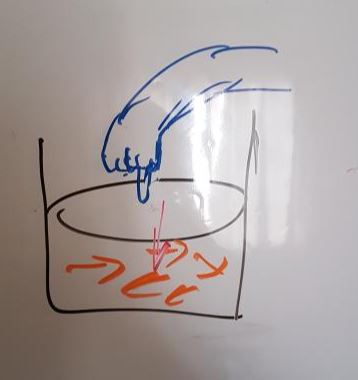Suppose there is a piston as shown below,
And, let's say that I press down on the piston using one finger, this compresses the gas inside.
Now, in usual thermodynamic textbooks, we say that the force exerted by piston on gas is equal to the pressure of the piston on the gas times area of the piston but, here, I have applied the force on a small area only. How exactly did the pressure from my finger transmit for the previous statement to be true? I Find it strange that the whole force exerted at a small area and the other side the same force comes over a large area, does this mean pressure on each side is different? How would we work this out from the first principles about pressure?
Color key:
Orange is the gas molecules with different velocities moving about in the container
Red arrow denotes direction of gas
Note: the main point I wish to understand how the pressure is transmitted, because on one side it is concentrated at other point, on the other the whole face pushes down the gas.


